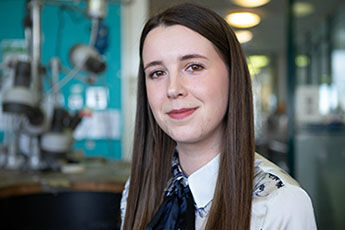Meet the Jewellery undergraduate course leaders
As a student Jewellery you’ll be part of a creative and collaborative community and benefit from our excellent resources, including state-of-the-art facilities and academic expertise.
Take a look at the profiles to find out more about our undergraduate Course Directors and Lecturers, including their career highlights, their favourite things about teaching here and why they think it’s important to study an undergraduate degree course.

Miranda Wells
BSc (Hons) Gemmology and Jewellery Studies




